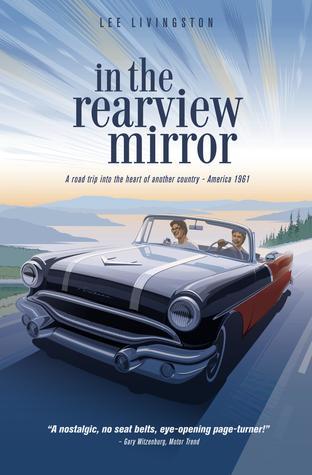Today, drivers take safety features such as seat belts, airbags and a slew of driver assistance safety features for granted. But there was a time when cars were built with none of them.
One book changed all that. Published 56 years ago this week, in 1965, Ralph Nader’s book, “Unsafe at Any Speed: The Designed-In Dangers of the American Automobile,” would change the automotive industry forever, leading Congress to create the federal agency that became the National Highway Traffic Safety Administration less than a year later.
A lawyer presents his case
The author, a 32-year-old lawyer, a graduate of Princeton and Harvard and the son of Lebanese immigrants, threw down the gauntlet in the book’s first sentence: “For over half a century, the automobile has brought death, injury, and the most inestimable sorrow and deprivation to millions of people.”
He would go on to accuse automakers on stinting on safety, particularly the 1960-63 Chevrolet Corvair, with a rear-mounted engine and swing axle rear suspension that led the car to oversteer, and in the most extreme cases, roll over.
Nader argued the lack of an inexpensive anti-roll bar could have made the car far safer. GM’s response was to hire private detectives who followed Nader, tapped his phone and even hired prostitutes to entrap him in unflattering situations. It would lead to Congress demanding an apology from GM, the first of many embarrassing moments to come for the corporation.

But the majority of the book focuses on safety features automakers knew about, but did not add to their cars. The attitude sprung from a mid-’50s attempt to sell safety, offering padded dashboards and selling optional safety belts — a $27 option that fewer than 2% of buyers opted for. The marketing effort clearly had little impact; Chevrolet outsold Ford that year, leading some to say that while Ford was busy selling safety, Chevrolet sold cars.
Government responds — finally
Yet the effort did plant the first seeds of concern about auto safety, with Congress holding a series of hearings on the issue in 1956.
But it would be another decade, and the publication of Nader’s book, before Congress once again took up the issue, this time, asking Nader to testify before a Senate subcommittee. By September 1966, President Lyndon B. Johnson signed the National Traffic and Motor Vehicle Safety Act, which called for requiring the adoption of new car safety standards, and creating an agency to enforce them and issue safety recalls. For the first time in its history, the auto industry would be regulated.
The regulations put in place since then have seen automobile-related fatalities plummet from 5.5 per million people in 1965, when Nader’s book was published, to 1.1 per million in 2019 — a 92% reduction.
But the cost of added safety is just that: cost. These days what was once a simple repair, like replacing a damaged headlight or a cracked windshield can lead to a four-figure repair bill. In fact, the cost of safety features, and consumers’ desire to have them, is driving the price of a new car higher and higher, especially since the addition of driver-assistance safety systems.
The fate of the Corvair
Much has been written about the Corvair, and it was clearly a failure.
The car was doomed from its inception, according to John DeLorean, quoted in his book, “On A Clear Day You Can See General Motors.” DeLorean confirmed Nader’s charges that GM’s engineering staff knew of the car’s handling problems. But Ed Cole, Chevrolet’s general manger who was spearheading the car, overrode their objections. But 1961, Semon “Bunkie” Knudson, who replaced Cole, was so concerned about the car’s safety, he wanted to install a stabilizer bar in the Corvair, something that happened only after he threatened to quit.
When Ford’s Falcon and its mundane engineering vastly outsold the Corvair, GM rushed out a response: the equally bland 1962 Chevy II. The popularity of the sportier Corvair Monza model gave the model some much-needed sales, and its success prompted Ford to develop the Mustang as a response.
By 1966, sales had cratered, and GM halted development of the third-generation car and its production capacity would be used for a new model: the Camaro. Corvair production continued through 1969, perhaps to cover costs.
None of this affected Cole’s career, even though he would oversee another engineering disaster: the Chevrolet Vega. Cole went on to become GM’s president. The Corvair would become the object of derision in most people’s minds. Nader would go on to form the Center for Auto Safety in 1970 with Consumers Union, the parent company of Consumer Reports. He would later run for president in 2000.









